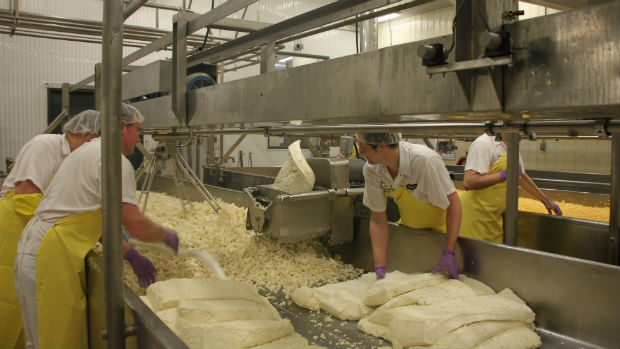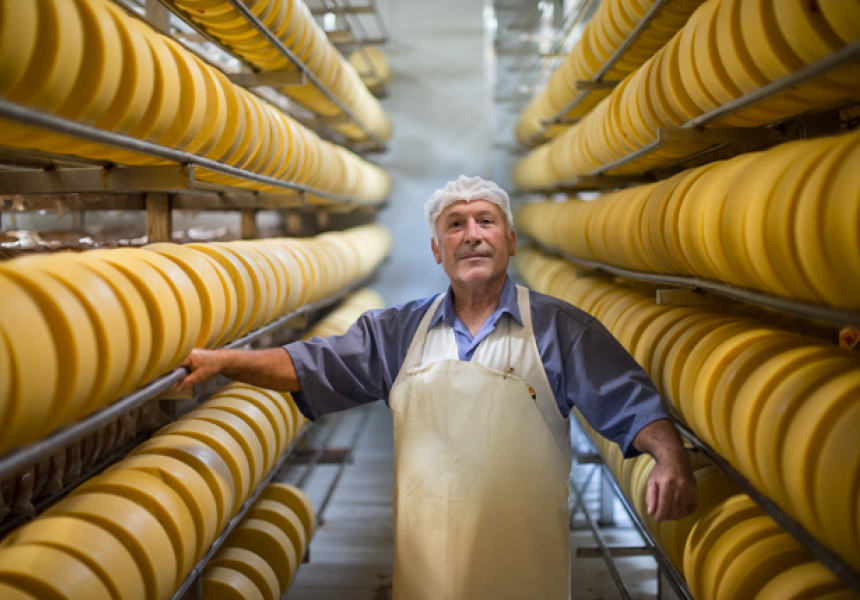Cheese Makers Melbourne: Crafting best Cheeses In Your Area
Cheese Makers Melbourne: Crafting best Cheeses In Your Area
Blog Article
A Comprehensive Guide to Cheese Production: Actions, Challenges, and High Quality Control Actions
Cheese manufacturing is an intricate procedure that requires thorough interest to detail, from the first choice of top quality milk to the last stages of manufacturing. As we check out these facets, it comes to be clear that the future of cheese manufacturing will be shaped by progressing fads and modern technologies that might redefine conventional methods.

Introduction of Cheese Production
Cheese manufacturing is a complex procedure that changes raw milk right into a varied variety of dairy products, each with distinct tastes and structures. The journey begins with the choice of high-grade milk, which can originate from various sources, including cows, goats, and sheep. The composition of the milk-- fat material, healthy protein degrees, and the visibility of specific societies-- plays a vital role in the end product.
The procedure typically involves numerous stages, consisting of pasteurization, where unsafe germs are removed, and the enhancement of starter cultures and rennet, which facilitate milk coagulation. When coagulated, the curds are divided from the whey, and the curds undergo different therapies, consisting of cutting, cooking, and pushing, which significantly influence celebrity's features.
Furthermore, variables such as aging problems, humidity, and temperature can dramatically alter the taste profile and texture of celebrity. The art of cheese manufacturing depends heavily on the cheesemaker's expertise, as they should balance scientific research and creativity to generate top quality cheese. Understanding these fundamental aspects is crucial for appreciating the complex nature of cheese production and the wide spectrum of cheeses readily available in the marketplace today.

Key Actions In Manufacturing
The cheese manufacturing process involves a number of essential steps that collectively transform raw milk into a finished item. The process starts with milk collection and quality assessment, ensuring that the raw product meets the needed standards for cheesemaking. Following this, the milk is pasteurized to remove harmful microorganisms, boosting the security of the final product.
Next, particular starter societies are included to the pasteurized milk, helping with the fermentation procedure. These cultures convert lactose right into lactic acid, which helps in curd formation. Consequently, rennet is introduced to coagulate the milk, leading to the separation of curds and whey. The curds are then reduced and cooked, enabling them to release more whey.
Once the desired appearance is achieved, the curds are drained and pushed into molds, shaping celebrity. Salting is a crucial action, adding to flavor, preservation, and moisture control. Later, celebrity might undertake aging or ripening, throughout which flavors and structures establish additionally. Lastly, the finished cheese is packaged for distribution. Each of these actions is critical in making certain the top quality and attributes of the cheese produced.
Common Difficulties Faced
While the cheese manufacturing process is thoroughly created, different difficulties can occur that effect both manufacturing efficiency and product top quality. One common challenge is fluctuations in raw product top quality, specifically milk.
An additional considerable challenge is keeping optimum fermentation conditions. Temperature and moisture fluctuations during aging can lead to unfavorable microbial growth, affecting taste profiles and cheese safety. Staffing concerns, including a lack of competent labor, can prevent procedures and lead to mistakes in manufacturing procedures.
Tools maintenance is also vital; malfunctions can interfere with operations, causing manufacturing hold-ups and boosted expenses. Regulative conformity provides its own set of obstacles, as makers need to stick to strict food safety standards, which can differ by area. Navigating these obstacles calls for an aggressive technique, integrating extensive training, routine equipment checks, and solid provider partnerships to ensure a consistent and high-quality cheese result.
High Quality Control Techniques
Ensuring item consistency and safety and security depends heavily on reliable quality assurance techniques throughout celebrity production process. These techniques include various phases, from raw material choice to final item assessment.
One crucial facet is the monitoring of milk top quality, which includes screening for microbial contamination, somatic cell counts, and antibiotic deposits. Implementing rigorous vendor assessments makes sure that only top notch milk is used, laying a strong foundation for the cheese-making process.
Throughout production, important control points (CCPs) need to be identified and kept an eye on. This consists of temperature control during pasteurization and fermentation, along with pH monitoring throughout curd development - cheese store melbourne. Routine tasting and evaluation of whey and curds can assist detect discrepancies from preferred parameters early
Post-production, sensory examinations, chemical evaluations, and microbiological testing are vital to validate that the you can find out more last product meets well established top quality standards. Packaging and storage conditions likewise require close oversight to avoid perishing and contamination.
Including a durable quality management system, including paperwork and traceability, supports compliance with food security guidelines. By taking on these thorough quality assurance techniques, cheese manufacturers can considerably improve item high quality and customer depend on.
Future Fads in Cheesemaking
As celebrity production landscape progresses, ingenious methods and innovations are shaping the future of cheesemaking. One noteworthy trend is the enhancing use automation and man-made intelligence (AI) in production processes. These technologies enhance performance, lower labor prices, and enable higher precision in cheese formulation and aging, causing regular high quality and flavor profiles.
Sustainability is another critical emphasis, with cheesemakers embracing eco-friendly practices, such as sourcing this hyperlink milk from local ranches, making use of renewable resource resources, and carrying out waste reduction techniques. This change not just appeals to eco mindful consumers yet likewise addresses regulatory pressures for lasting practices.
Moreover, the need for artisanal and specialty cheeses proceeds to increase, motivating manufacturers to check out one-of-a-kind taste combinations and ingenious aging techniques. This fad is matched by the expanding rate of interest in plant-based and non-dairy cheese alternatives, driven by nutritional click for info preferences and wellness considerations.
In addition, developments in modern technology assist in boosted traceability, enabling customers to better recognize the origin and manufacturing methods of their cheese. As these patterns unravel, the cheesemaking industry is positioned to embrace a future defined by innovation, sustainability, and a dedication to top quality.
Final Thought
In recap, cheese production encompasses a complex interplay of procedures, obstacles, and quality assurance steps that are vital for generating diverse cheese varieties. The choice of high-grade milk, adherence to pasteurization criteria, and meticulous fermentation conditions are vital for ensuring product safety and consistency. Addressing existing challenges, such as labor shortages and equipment maintenance, alongside embracing future trends in automation and sustainability, will substantially improve celebrity market's capability to satisfy developing consumer demands and maintain high criteria.
Report this page